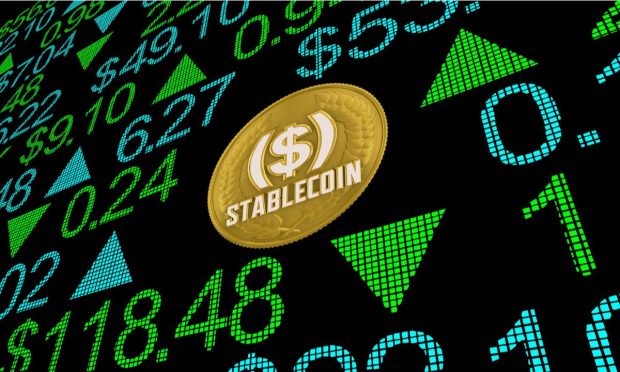Did Stablecoin’s Collapse Pose Broader Threat? BoA, Goldman Disagree

The collapse of the TerraUSD stablecoin didn’t just drain $45 billion from investors following a run earlier this month. It raised questions about the stability of decentralized finance (DeFi) as a whole and its risks to the broader financial markets.
Those questions got two different answers from two banking giants last week, as Bank of America analysts called fears overblown. At the same time, Goldman Sachs warned that it showed just how interconnected the DeFi ecosystem is.
See also: TerraUSD’s Price Collapse Shows Vulnerability of Dollar-Pegged Cryptos
The question of systemic risk is one that central bankers and regulators have speculated about for some time: That it’s not so much the direct losses to investors of a crypto meltdown caused by the spectacular failure of a cryptocurrency or a broader crypto winter of collapsing prices.
More than a few traditional investors now own crypto. If they take a pasting, they might have to sell other investments, potentially at fire-sale prices. And a small-but-growing number of public companies have exposure to crypto or the industry that serves it.
Bloomberg Opinion columnist Matt Levine compared the risk — or at least the argument that there is one — to the subprime mortgage crisis in 2008 when the value of the financial assets backed by these mortgages collapsed.
Investors “had to sell other stuff to pay off their debts, which drove down the prices of other stuff, which led to broad market contagion, which destroyed a lot of wealth, which reduced economic activity, etc.,” he wrote on May 12, as TerraUSD was collapsing. “Meanwhile, the banks had lost money and were more risk-averse and less able to lend, reducing economic activity. And so normal people lost their jobs because of contagion from some weird financial asset that they hadn’t even heard of.”
Was Terra Dangerous?
Bank of America analysts said that both the risk of contagion within the cryptocurrency market and spillover into the traditional market were unfounded, CoinDesk reported. For one thing, TerraUSD was an “algorithmic stablecoin,” meaning its dollar peg wasn’t supported by a basket of currency and other assets like treasuries.
Read also: PYMNTS DeFi Series: What Is an Algorithmic Stablecoin? DAI and the Fiat-Free Dollar Peg
However, the largest stablecoins maintained their pegs as TerraUSD sank, and while the broader crypto market declined, it was doing that largely for other reasons, Bank of America noted.
Goldman analysts came to a different conclusion after looking a little more closely at the impact of the collapse on the DeFi ecosystem, CoinDesk said.
Lido is a DeFi staking app that offers yield — interest — for locking ether tokens into lending platforms or the trading pools that act as market makers for DeFi-based cryptocurrency exchanges.
See more: PYMNTS DeFi Series: What is Yield Farming and Liquidity Mining?
The connection is complex, but the upshot is that Lido investors were awarded a type of token that could, in turn, be locked into a TerraUSD-connected staking platform called Anchor.
The Lido-issued token dropped 4.5% as a result, partly because the collapse of the stablecoin interfered with the ability to withdraw funds from Anchor.
So what? Well, the token Lido issues — called stETH — is a “wrapped” ether (ETH) token exchangeable one-for-one with ETH. Which is to say, it’s a stablecoin of sorts, although one is pegged to another cryptocurrency instead of a dollar. The 4.5% drop was essentially a loss of peg.
The problem is, Lido is huge, with about a third of all staked ether. That’s about $6.7 billion.
And it is an example of how “DeFi’s compostability can theoretically increase systemic risk,” Goldman’s report said, according to CoinDesk.
